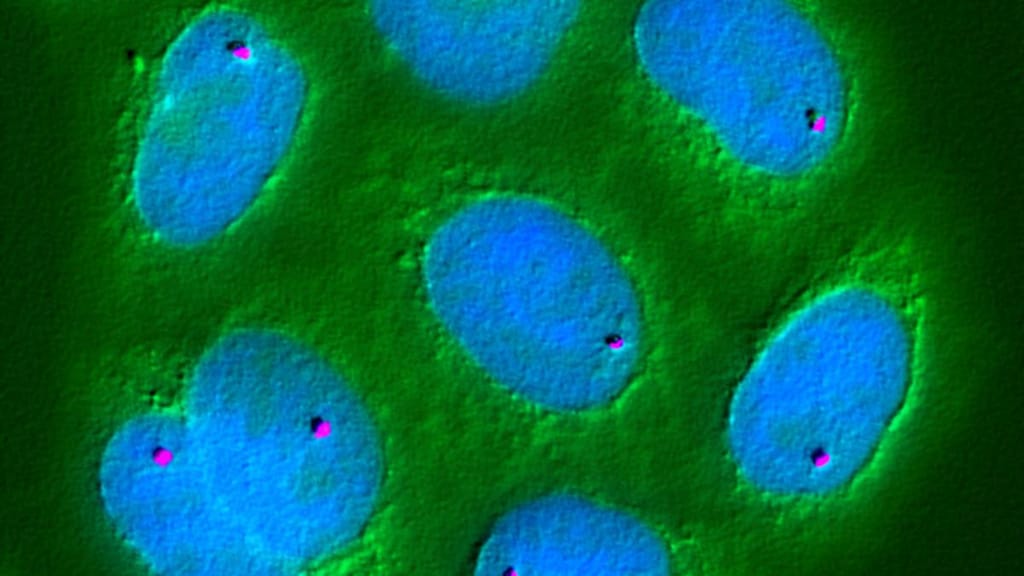What You Should Know About Breast Cancer Stages

If you've been diagnosed with breast cancer, a number becomes important. The stage of your cancer — its size and whether it has spread — is identified by a number, which becomes a tool you can use to understand what's going on in your body and help you and your doctors determine your course of treatment.
The numbering system for breast cancer ranges from 0 to 4 (also sometimes written as stage I-IV), with the stages getting more severe as the number goes up. The more the cancer has spread, the higher the number and the more serious the diagnosis and treatment.
A tumor might be discovered on an X-ray or noticed as a lump during a self-exam or doctor’s visit. Though it may be alarming to feel a lump, most breast lumps are not cancerous, according to the American Cancer Society. But if you have a lump, it needs to be checked out.
How are stages determined?
Your doctor will look at a number of criteria, such as whether the cancer is limited to one area of the breast or if it has spread, either to other parts of your body or to the tissue area under the breast, according to Breastcancer.org. The staging system is called TNM. The T stands for tumor, meaning the size of the cancer tumor and whether it has spread into other areas. The N is whether the lymph nodes are affected by the cancer, and the M is if the cancer has metastasized or spread.
Breast cancer stage by stage
Stage 0
If you are diagnosed with breast cancer and your doctor says you are stage 0, that means you have a non-invasive cancer that is limited to the inside of the milk duct inside the breast, according to the American Cancer Society. The treatment is typically surgery, with possibly hormone therapy after the surgery to reduce the chance that the cancer will return. The options for surgery include breast-conserving surgery (BCS) or a total mastectomy.
Stage 1
In stage 1, the cancer has not spread to the lymph nodes, or, if it has spread, it’s a very small amount of cancer that has spread. This stage is broken down into subcategories 1A and 1B, Breastcancer.org explains.
- Stage 1A means that the cancer tumor measures up to 2 centimeters long, the cancer is contained to the breast and lymph nodes are cancer-free.
- Stage 1B differs from 1A, in that 1B has no tumor in the breast. Instead, groups of cancer cells not larger than 2 millimeters but not smaller than 0.2 millimeters are found in the lymph nodes.
The treatment for stage 1 breast cancer, according to the American Cancer Society, is usually surgery, followed by radiation therapy to prolong life and protect against the cancer returning, known as a recurrence.
Stage 2
In stage 2 breast cancer, the amount of cancer is larger than stage 1, and it may also have spread to nearby lymph nodes. Stage 2 cancer is also broken down into subcategories 2A and 2B, Breastcancer.org says.
Stage 2A is invasive cancer that has one of the following attributes:
- There’s no tumor, but the cancer is larger than 2 millimeters and is found in one to three axillary lymph nodes (under the arm) or the lymph nodes under the breast.
- The tumor is 2 centimeters or smaller and has spread to the axillary lymph nodes.
- The tumor is larger than 2 centimeters (but not bigger than 5 centimeters), but has not spread to the lymph nodes.
Stage 2B is invasive cancer that has one of the following attributes:
- The tumor is 2 to 5 centimeters in size, and small breast cancer cells (larger than 0.2 millimeters but smaller than 2 millimeters) are found in the lymph nodes.
- The tumor is 2 to 5 centimeters, and the cancer has spread to one to three axillary lymph nodes or the lymph nodes near the breastbone.
- The tumor is larger than 5 centimeters but has not spread to axillary lymph nodes.
Stage 2 breast cancer treatment typically involves surgery followed by radiation therapy, the American Cancer Society says.
Stage 3
With stage 3 breast cancer, the tumors are larger than in stage 2 or they have spread to nearby lymph nodes or into tissue near the breast, including the muscle underneath the breast and the skin over the breast. Stage 3 breast cancer is further divided into subcategories known as 3A, 3B and 3C, Breastcancer.org explains.
Stage 3A breast cancer has one of the following attributes:
- No cancer tumor is found in the breast, but cancer is found in four to nine axillary lymph nodes or in the lymph nodes near the breastbone.
- The tumor is bigger than 5 centimeters and small groups of cancer cells between .2 and 2 millimeters are found in the lymph nodes.
- The tumor has grown to bigger than 5 centimeters and the cancer has spread to one to three axillary lymph nodes.
Stage 3B breast cancer has one of the following attributes:
- The tumor may be any size, and the cancer has spread to the skin of the breast or the chest wall.
- The cancer has spread to nine axillary lymph nodes or to the breastbone lymph nodes.
Additionally, if you have inflammatory breast cancer, meaning the breast feels swollen or warm to the touch or the breast skin looks red, this is considered at least stage 3B.
Stage 3C breast cancer has one of the following attributes:
- The cancer has spread to lymph nodes near the breastbone or above and below the collarbone.
- The cancer has spread to at least 10 axillary lymph nodes.
- The cancer has spread to the breast skin or chest wall.
Stage 3 breast cancer is typically treated with chemotherapy and then surgery, which may be followed by radiation therapy, the American Cancer Society says.
Stage 4
Stage 4 breast cancer — called metastatic breast cancer — is when the cancer has spread beyond the breast to other parts of the body, such as the lungs, liver, brain or bones, or to any lymph nodes. The tumor in the breast can be any size.
In this stage of breast cancer, the treatment usually involves drug therapies, including chemotherapy, targeted therapy, hormone therapy or a combination of those, the American Cancer Society says. At this point, the cancer cannot be cured so treatments are intended to make the patient feel better, extend life and shrink the tumor.
Prognosis for breast cancer by stage
If you have been diagnosed with breast cancer, one of your first questions may have been what this means for your future. The American Cancer Society, referring to the National Cancer Institute’s database known as SEER (Surveillance, Epidemiology and End Results), explains it this way:
SEER does not track survival rates by the stages of 0 through 4, but rather groups cancers into stages known as localized, regional and distant. Localized is when the cancer has not spread outside of the breast, regional is when it has spread to nearby lymph nodes or tissues, and distant is when the cancer has spread farther to body parts such as the bones, lungs or liver.
The five-year survival rate for women with localized cancer is 99 percent. It is 85 percent for women with regional cancer and 27 percent for women with distant cancer.
It’s important to keep in mind, the American Cancer Society says, that these statistics are based on women who were diagnosed at least five years ago and that people being diagnosed today probably have an even better outlook. Survival rates increase over time as treatments and research improve.
Article references
- American Cancer Society, Treatment of Breast Cancer by Stage; https://www.cancer.org/cancer/breast-cancer/treatment/treatment-of-breast-cancer-by-stage.html
- American Cancer Society, Treatment of Ductal Carcinoma in Situ (DCIS); https://www.cancer.org/cancer/breast-cancer/treatment/treatment-of-breast-cancer-by-stage/treatment-of-ductal-carcinoma-in-situ-dcis.html
- American Cancer Society; Treatment of Breast Cancer Stages I-III; https://www.cancer.org/cancer/breast-cancer/treatment/treatment-of-breast-cancer-by-stage/treatment-of-breast-cancer-stages-i-iii.html
- American Cancer Society; Treatment of Stage IV (Metastatic) Breast Cancer; https://www.cancer.org/cancer/breast-cancer/treatment/treatment-of-breast-cancer-by-stage/treatment-of-stage-iv-advanced-breast-cancer.html
- American Cancer Society; Survival Rates for Breast Cancer; https://www.cancer.org/cancer/breast-cancer/understanding-a-breast-cancer-diagnosis/breast-cancer-survival-rates.html
- American Cancer Society; What Is Breast Cancer? https://www.cancer.org/cancer/breast-cancer/about/what-is-breast-cancer.html
- BreastCancer.org, Breast Cancer Stages; https://www.breastcancer.org/symptoms/diagnosis/staging
- Cancer.net, Breast Cancer Stages; https://www.cancer.net/cancer-types/breast-cancer/stages




